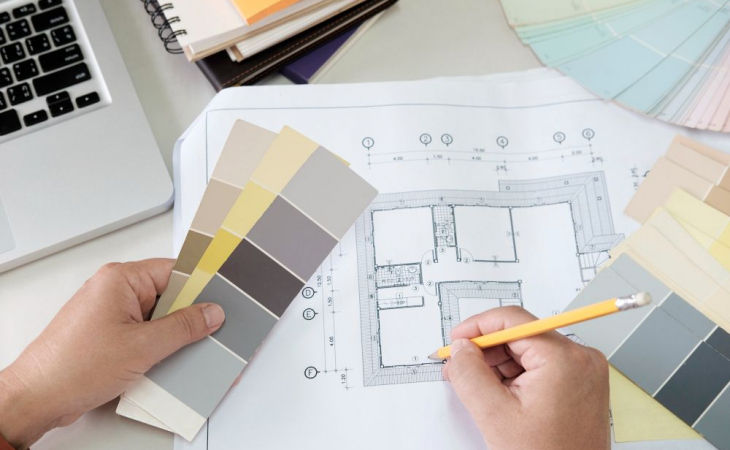Exploring Interior Design Course for Aspiring Designers
Share

Do you have a knack for combining colors, textures, and layouts to create inviting environments? If so, pursuing a career in interior design might just be your calling. With the world increasingly focused on aesthetics and functionality, skilled interior designers are more sought after than ever. Whether you’re dreaming of redesigning homes or curating commercial spaces, getting the right education is crucial. Let’s dive into the exciting realm of interior design courses that can help shape your creative journey!
Understanding Interior Design Courses
Interior design courses offer an immersive exploration into the realms of aesthetics, functionality, and creativity. These educational programs typically encompass a wide spectrum of design theories, color harmonies, spatial arrangements, and material considerations. Students delve into the art of balancing beauty with practicality, learning to craft spaces that not only reflect individual tastes but also cater to everyday needs. Hands-on projects are crucial, enabling students to put their theoretical knowledge into practice in real-world scenarios. This practical experience is invaluable, providing a solid foundation for future careers. Discover Kolkata design too.
Moreover, many courses integrate sustainable design principles, responding to the growing demand for eco-conscious solutions in today’s market. Whether focusing on residential dwellings or commercial venues, aspiring designers gain comprehensive insights across various sectors within the field of interior design or media design.
<h2>Choosing the Right Interior Design Course</h2>
<p></p>
<p>Navigating the selection of an interior design course can be daunting amid the plethora of available options. It’s essential to align your choice with your career aspirations from the outset. Begin by clarifying your professional goals—are you drawn to designing residential interiors or intrigued by the challenges of commercial projects? This clarity will guide you in making decisions.</p>
<p></p>
<p>Researching the curriculum of prospective programs is crucial. Seek courses emphasizing hands-on learning and practical application, vital in competitive interior design.</p>
<p></p>
<p>Consider the institution’s reputation and track record within the industry. Established schools often offer robust networking opportunities and industry connections that can pave the way to future success.</p>
<p></p>
<p>Lastly, factor in flexibility. Online courses provide convenience for those balancing studies with other commitments. Balancing commitment and preferred learning style is crucial for a fulfilling journey in interior design.</p>
<h2>Degree vs Diploma: Which is Right for You?</h2>
<p></p>
<p>Choosing between a degree and a diploma in interior design can be challenging. Each pathway offers distinct advantages tailored to different career aspirations.</p>
<p></p>
<p>A degree program typically covers broader aspects of design theory, history, and technology. It often includes extensive coursework and projects that prepare students for diverse roles within the industry. Graduates may find opportunities in high-end firms or specialized areas like sustainable design.</p>
<p></p>
<p>On the other hand, a diploma focuses on practical skills and hands-on experience. This option is ideal for those eager to enter the workforce quickly. Digital products design programs often have shorter durations, allowing students to build portfolios faster.</p>
<h2>Technological Advances in Interior Design Education</h2>
<p></p>
<p>Interior design course in Delhi education is rapidly evolving due to technological advancements. Virtual reality (VR) and augmented reality (AR) are transforming how students experience design. Imagine walking through a virtual room that you’ve designed yourself. This immersive technology allows aspiring designers to visualize their concepts in real-time.</p>
<p></p>
<p>Additionally, online learning platforms have made it easier than ever to access quality courses from anywhere in the world. Digital learning offers flexibility for various lifestyles, accommodating both comprehensive degree programs and shorter diploma courses.</p>
<p></p>
<p>Design curricula now commonly integrate software tools such as AutoCAD, SketchUp, and Revit. Familiarity with these programs enhances your skill set and prepares you for industry demands.</p>
<p></p>
<p>Moreover, social media has become an invaluable resource for networking and inspiration within the field of interior design. Platforms like Instagram and Pinterest allow students to showcase their work while gaining insights from established professionals./p>
<p>In the dynamic world of interior design, where aesthetics meet functionality, the journey begins with education. Aspiring designers are attracted to this field for its creative challenges and the chance to shape inspiring environments. Whether imagining residential transformations or innovating commercial spaces, the right Interior Design Course paves the way for a fulfilling career.</p>
<p></p>
<p>Ultimately, pursuing interior design courses isn’t just about acquiring knowledge. It’s about cultivating creativity, honing skills, and forging connections that lead to a successful career. Ultimately, interior design courses are about more than knowledge—they cultivate creativity, hone skills, and forge connections for a successful career.</p>

